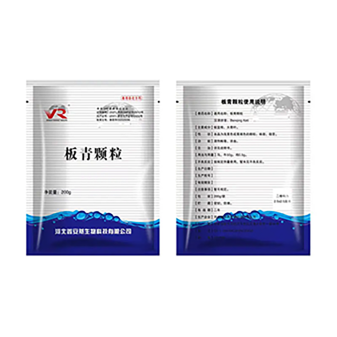- Afrikaans
- Albanian
- Amharic
- Arabic
- Armenian
- Azerbaijani
- Basque
- Belarusian
- Bengali
- Bosnian
- Bulgarian
- Catalan
- Cebuano
- Corsican
- Croatian
- Czech
- Danish
- Dutch
- English
- Esperanto
- Estonian
- Finnish
- French
- Frisian
- Galician
- Georgian
- German
- Greek
- Gujarati
- Haitian Creole
- hausa
- hawaiian
- Hebrew
- Hindi
- Miao
- Hungarian
- Icelandic
- igbo
- Indonesian
- irish
- Italian
- Japanese
- Javanese
- Kannada
- kazakh
- Khmer
- Rwandese
- Korean
- Kurdish
- Kyrgyz
- Lao
- Latin
- Latvian
- Lithuanian
- Luxembourgish
- Macedonian
- Malgashi
- Malay
- Malayalam
- Maltese
- Maori
- Marathi
- Mongolian
- Myanmar
- Nepali
- Norwegian
- Norwegian
- Occitan
- Pashto
- Persian
- Polish
- Portuguese
- Punjabi
- Romanian
- Russian
- Samoan
- Scottish Gaelic
- Serbian
- Sesotho
- Shona
- Sindhi
- Sinhala
- Slovak
- Slovenian
- Somali
- Spanish
- Sundanese
- Swahili
- Swedish
- Tagalog
- Tajik
- Tamil
- Tatar
- Telugu
- Thai
- Turkish
- Turkmen
- Ukrainian
- Urdu
- Uighur
- Uzbek
- Vietnamese
- Welsh
- Bantu
- Yiddish
- Yoruba
- Zulu
9 月 . 07, 2024 21:48 Back to list
Oxytetracycline Hydrochloride Injection for Animals - Uses and Benefits
Oxytetracycline Hydrochloride Injection Uses for Animals
Oxytetracycline hydrochloride is a broad-spectrum antibiotic that is widely used in veterinary medicine. Primarily, it is administered to treat a variety of bacterial infections in animals, making it an essential component in the healthcare of livestock and pets alike. This powerful antibiotic has been utilized in the agricultural sector for decades, ensuring the health and productivity of animals.
One of the primary uses of oxytetracycline hydrochloride is in the treatment of respiratory diseases. In livestock, particularly cattle and swine, respiratory infections can lead to significant economic losses due to decreased productivity, increased veterinary costs, and even mortality. Oxytetracycline effectively combats bacteria that cause pneumonia and other respiratory ailments, contributing to the overall health and wellbeing of these animals.
Additionally, oxytetracycline hydrochloride is effective against a range of pathogens responsible for various infections, including skin infections, urinary tract infections, and septicemia. It has been notably effective in treating bacterial infections in poultry, where conditions such as fowl cholera, infectious coryza, and chronic respiratory disease can severely impact flock health and production. The antibiotic aids in reducing mortality rates and enhancing growth performance in affected poultry, proving crucial for poultry producers aiming to maintain a healthy flock.
oxytetracycline hydrochloride injection uses for animals

Oxytetracycline is also employed in the prevention of diseases, especially in young animals. For instance, it is used in the early stages of a calf’s life to prevent early-onset infections. By providing preventative treatment, farmers can safeguard their investments and ensure a healthier, more productive future for the livestock.
Moreover, oxytetracycline hydrochloride exhibits anti-inflammatory properties, making it beneficial in managing certain inflammatory conditions in animals. This dual function not only targets the underlying bacterial infection but also alleviates symptoms such as pain and swelling, contributing to a quicker recovery.
In recent years, the use of antibiotics in agriculture has come under scrutiny due to concerns about antibiotic resistance and the impact on food safety. As a result, veterinarians and farmers are encouraged to use oxytetracycline judiciously and in accordance with established guidelines. The principles of responsible use stress the importance of accurate diagnosis before treatment, using the lowest effective dose, and adhering to withdrawal periods to ensure that antibiotic residues do not enter the food chain.
In conclusion, oxytetracycline hydrochloride injection plays a crucial role in veterinary medicine, providing effective treatment for bacterial infections in a diverse range of animal species. Its applications in treating respiratory diseases, preventing infections, and managing inflammation underscore its importance in maintaining animal health and welfare. However, responsible use is essential to mitigate risks associated with antibiotic resistance, ensuring that this valuable therapeutic agent remains effective for future generations.
-
The Power of Radix Isatidis Extract for Your Health and Wellness
NewsOct.29,2024
-
Neomycin Sulfate Soluble Powder: A Versatile Solution for Pet Health
NewsOct.29,2024
-
Lincomycin Hydrochloride Soluble Powder – The Essential Solution
NewsOct.29,2024
-
Garamycin Gentamicin Sulfate for Effective Infection Control
NewsOct.29,2024
-
Doxycycline Hyclate Soluble Powder: Your Antibiotic Needs
NewsOct.29,2024
-
Tilmicosin Premix: The Ultimate Solution for Poultry Health
NewsOct.29,2024













